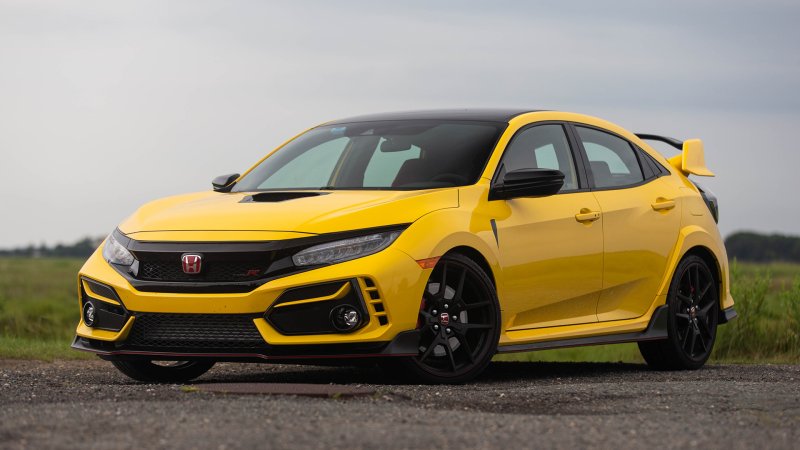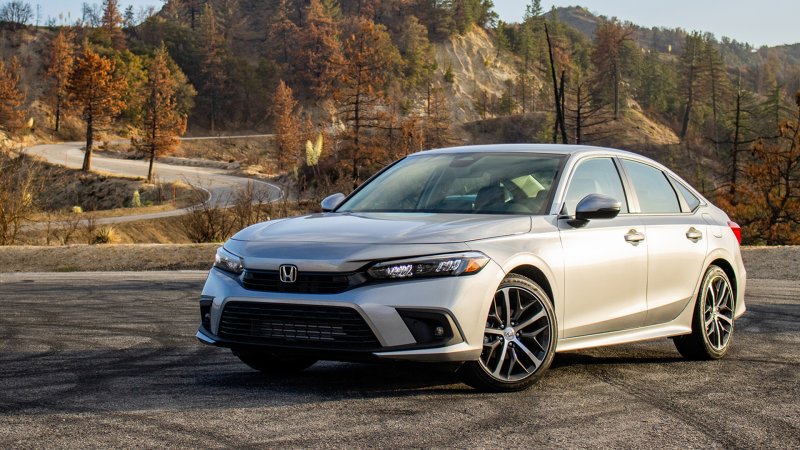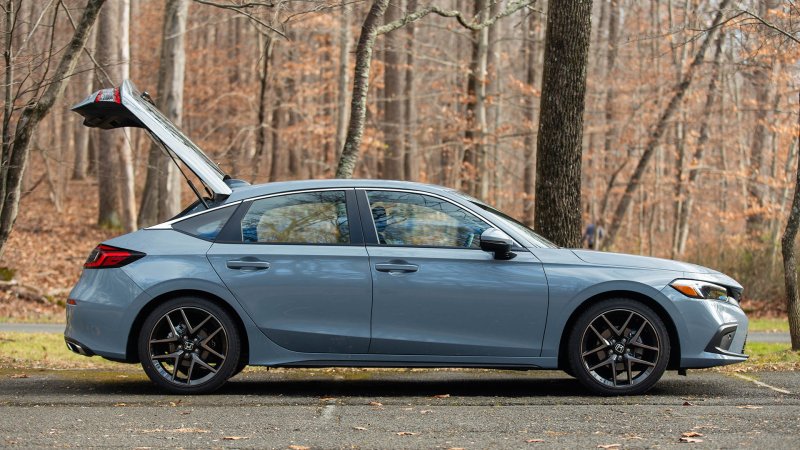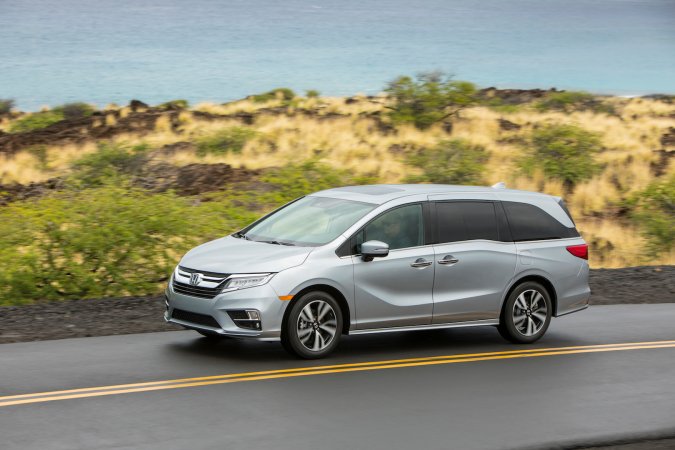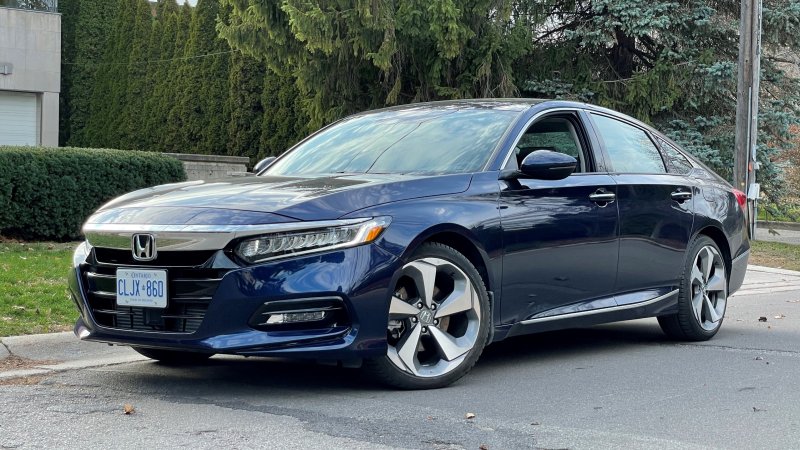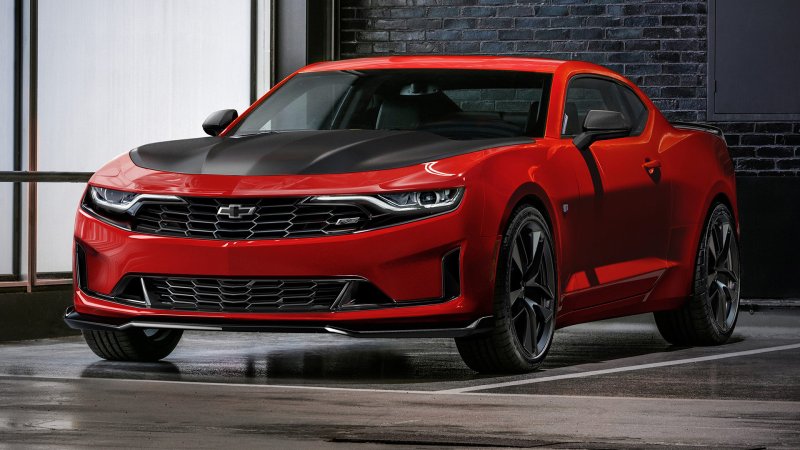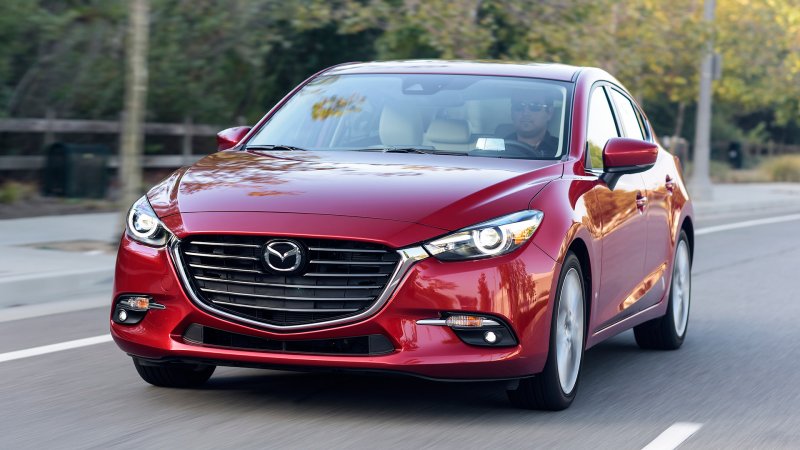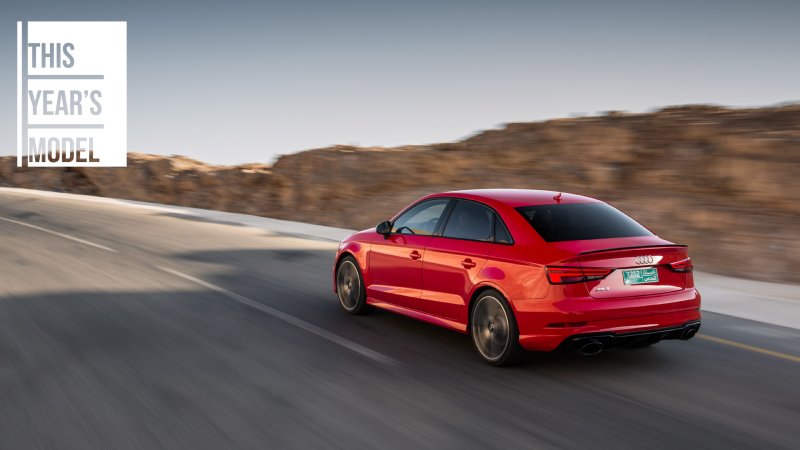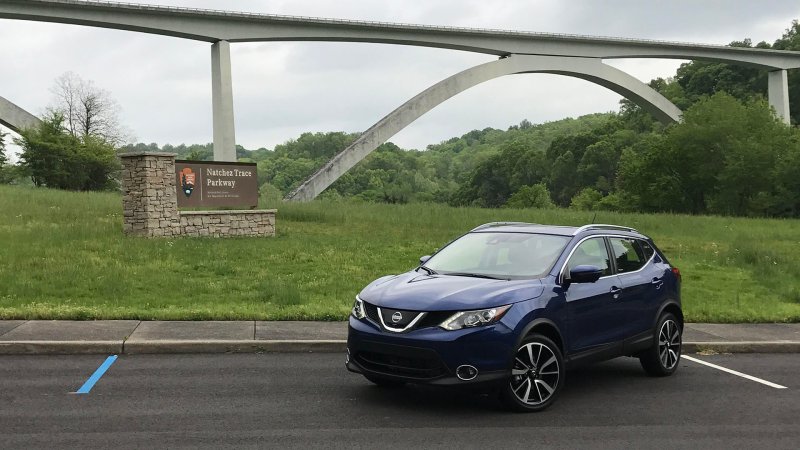Thirty-six thousand and sixty-four. According to the little numbered plaque placed beneath this hatchback’s aluminum six-speed shifter, that’s precisely how many FK8 Civic Type R’s were built at the Honda plant in Swindon, U.K. before they got to the car you see here. Is a Japanese hot hatch mass-produced in the tens of thousands really special enough to warrant a badge telling its owner exactly where it fell in the production run? Behind the wheel, bathed in the red glow of the cabin’s ambient lighting, grasping a first-rate manual shifter, feeling the real intentions of the people who made this car, the answer is an improbable yes.
If you’ve spent any time on the automotive internet in the past several years, the Type R likely doesn’t need much of an introduction. It’s the fast one. The one that remains staunchly front-driven in a segment increasingly full of all-wheel drivers. The absolute best one, as most of its fans would argue, and the one engineered—and styled—for the Midnight Club.

Like the rest of the Civic lineup, the Type R has undergone a mid-cycle refresh for 2020 and ostensibly I’m here to find out whether Honda’s radical-looking hatch is still worth its $37,950 asking price. It’s a bit like asking if Boost Blue water is wet; of course it is. But to find out why that is—and more importantly, how Honda’s keeping it relevant in the twilight of the tenth-generation Civic—it helps to begin with a bit of context.
The 2020 Honda Civic Type R, By the Numbers
- Base Price: $37,950
- Powertrain: 2.0-liter turbocharged four-cylinder | six-speed manual transmission | front-wheel drive
- Horsepower: 306 @ 6,500 rpm
- Torque: 295 lb-ft @ 2,500-4,500 rpm
- EPA Fuel Economy: 22 mpg city | 28 highway | 25 combined
- Curb Weight: 3,121 pounds
- Seating Capacity: 4
- Cargo Space: 25.7-46.2 cubic feet
- Quick Take: A killer drive from one of the most ubiquitously practical platforms in the game.
By now, you’re likely familiar with the history of Honda’s Type R badge in America but, for the people in the back, here’s a refresher. First seen on the Japan-only NSX Type R (a.k.a. NSX-R) back in 1992, the red-H denoted the highest performing version of every Honda model it graced. Hallmark features include Championship White paint, red seats, screaming VTEC engines, and some of the best-feeling manual shifters the world has ever seen.

While markets like Japan and Europe enjoyed a fairly-sized catalog of Type R machinery throughout the years including ‘roided-up Accords and multiple iterations of the Civic, the U.S. only received a brief taste in the form of the DC2 Integra Type R. Despite that car’s widely recognized reputation as the best-handling front-wheel-drive car ever made at the time, it was discontinued in 2001 and it would be another 16 years before the American market saw a red-badged Honda again.
Saturday Morning Television
Those of you who are good at math and deduction will have already worked out that this current Civic Type R first came on the scene in 2017. In the three past years that Honda’s hot hatch has been on the market, much has already been said about its outward appearance. You either like it or you don’t and nothing I write here is likely to change your mind.
Asking somebody to describe the CTR’s exterior almost always exposes what kind of Saturday morning cartoons they grew up watching. Will they go with the “Gundam-on-wheels” comparison or claim it to be the car Sonic the Hedgehog would drive? Personally, I love how it looks. I especially enjoy how the functional hood scoop is visible from the driver’s seat, making it feel like you’re behind the wheel of something American and rear-wheel-drive with double the cylinders.








For 2020, Honda has added that awesome Boost Blue color seen on our tester as well as some body-colored trim pieces to the fake vents to make that whole charade a little less blatant but, by and large, the Civic Type R remains the same Decepticon-in-disguise we’ve known and either loved or hated since 45’s first year in the White House. For the haters in the crowd, look at it this way: In an era where the Toyota goddamn Camry looks the way it looks, the Civic Type R’s styling feels right.
With that out of the way, let’s move on to matters less divisive.
A Civil Interior, +R
In typical Honda fashion, outward visibility is great and the basic ergonomics of this cabin are done quite well. Granted, with hundreds of thousands of vanilla Civics rolling off the assembly line and into customer hands every year, they kind of have to be. You don’t become the best-selling passenger car in America or rack up 1.5 million units sold over five years by being hard to live with. In Type R guise, there’s a bunch of red and carbon-pattern trim, a steering wheel now wrapped in Alcantara, a new, more oblong aluminum shift knob now sitting atop a shift boot made of synthetic suede, and a pair of extremely race car-esque front seats.




The newly Alcantara-laden wheel feels nice to hold and is the correct size while the big red thrones are an interior high point, remaining comfortable even after several hours of driving and perfectly bolstered when the road gets empty and twisty. They also look pretty cool provided you’re into the rest of this car’s general aesthetic.
While the Type R-specific interior enhancements have only improved upon the strong Civic base, it isn’t a cabin without faults. For starters, there’s no overhead cubby dedicated to holding sunglasses and there’s a weird distortion at the bottom of the windshield. The seats aren’t heated and neither is the steering wheel. The digital gauge cluster is informative and legible but could stand to be differentiated a little more from the pedestrian Civic’s clocks. How hard could it have been to have the speed displayed in a cooler font, Honda?

Also, this will mark the 70 billionth time someone’s complained about this last-gen Honda infotainment system but, just to put it out there once again, it isn’t great and neither is the stereo attached to it. Which, considering the Type R’s “economy car” roots, would be fine if only the Mazda3 wasn’t out here offering Bose audio and a center screen that feels about two generations ahead.
Once you look past the copious amount of red race car details and subpar infotainment, though, the inside of the Civic Type R is overall a practical, well-designed, comfortable place to be with few glaring flaws but also—by 2020 standards, at least—not that many luxuries.

The Drive: 2020 Honda Civic Type R
Underneath that bright blue sheet metal, the front-wheel-drive 2020 Civic Type R’s mechanical basics go mostly unchanged from last year. In between the driven wheels sits a 2.0-liter, turbocharged four-cylinder making 306 horsepower and 295 pound-feet of torque. That turbo VTEC grunt is fed exclusively to the front wheels through a six-speed manual transmission and a limited-slip differential.
As part of the refresh, the Type R receives a slightly bigger grille opening for better cooling, adaptive damping software that can read road conditions ten times more frequently, some stiffer bushings, and new, lower-friction front-axle ball joints.
What’s the revised Honda Civic Type R like to drive? In a word: fan-fucking-tastic.

The front axle is, far and away, the CTR’s star player, taking care of both steering and propulsion duties like an absolute champ. Instead of plowing and understeering when given more power mid-corner, the Type R and its LSD do the opposite, aggressively tucking in and staying the course with even more vigor than before.
Speaking of vigor, the hot Civic’s K20C1 motor is a lot more entertaining than its raw specs might suggest. Boost takes a second or so to build but once it arrives, it’s like the car has suddenly been strapped to a runaway train. 306 horses in this day and age are hardly enough to be considered Earth-shattering but it’s still a lot to send to just the front wheels and, as a result, hard acceleration is one of the only times the Type R blatantly exposes itself as being front-wheel-drive, with the front end doing an awkward and slightly disconcerting hop when too much power is requested too quickly from a stop.

When the front tires do decide to hook up, though, there’s a fervent buzz and intensity with which Honda’s hot hatch builds pace. Given the forced induction and relatively low cylinder count, the Type R was never going to rival any V8s or its naturally-aspirated ancestors on noise but hints of the old VTEC wail can still be heard as the car urgently runs towards its 7,000 rpm redline, rabidly rocketing towards the next bend at antisocial speeds.
Once you get there, a safe dab of the marvelous brakes, a couple of perfectly rev-matched downshifts, and a small turn of the perfectly-weighted wheel are all it takes to show what Civic Type R is really about.
Now using lighter two-piece rotors up front and a with a pedal dead zone cut by 17 percent, the Type R’s big red Brembos are a joy to use. Pedal travel is, indeed, extremely short with little to no buffer at the top but still very easy to come to a stop and operate without a whiff of jerkiness.

When it comes to changing gears, fast manual Hondas have always offered some of the best shifters in the game and the 2020 Civic Type R and its new knob with a 90-gram counterweight is no exception. Throws are short and satisfyingly clunky, with absolutely no play in the lever to speak of. No, it doesn’t make as much of that raw, metal-on-metal clink-clink as an S2000’s gearbox does when cold but let it warm up and the shift action here feels admirably similar to that of the elder car. It’s oily, crisp, and I suspect—in the context of new cars—about as good as it gets, especially in this price bracket. Paired with an equally-agreeable clutch, brake hold, and superb automatic rev matches every time, the Type R’s row-your-own transmission makes you feel like a way better driver than you actually are.

It also passes the Good Honda Shifter test of somehow being less than a hands’ width away from the steering wheel without relying on the convenience of a cramped cabin or gimmicks like the front-loading shift knob seen on the old EP3 Civic.
Steering could use a tad more feel, I guess, but is mostly excellent. It’s deliciously precise, quick, and paired to a chassis and suspension setup that’s taut, changes direction with a sense of fluidity and generally feels like it was made to move through a winding road extremely quickly. The grip is deeply impressive, limits are high, and after driving it with purpose, you completely understand how this car went around the Nürburgring in 7:43.80 when it was first introduced, besting every other front-wheel-drive production car that came before it.




However, don’t think that this is some numb and robotic lap-time fiend that doesn’t know how to party because, as quick and buttoned-down as it is, there’s a ridiculous amount of real driving enjoyment to be had here. Actually, scratch that because I think the Type R, on a good road, goes beyond “fun”—it’s a downright euphoric driving experience.
You get the sense it was built by people who understand driving and wanted to build something that would make its owners’ lives better and more enjoyable rather than something that would simply fill a gap in their employer’s product portfolio.
Piloting the Honda Civic Type R in a manner its creators intended is a special, thrilling, amazing experience—front-wheel drive be damned. It’s the kind of car you make excuses to run errands in and when you do, you’ll learn that it’s also quite good at just being a regular ol’ Civic, a solid commuting machine whose primary purpose is to comfortably transport people and their belongings from one place to another.

There are three driving modes to choose from—Comfort, Sport, and +R—that adjust steering weight, throttle mapping, damper harshness, and how loud the new Active Sound Control’s piped-in engine note gets. The difference between modes is apparent but not so wild that any one particular setting is unusable outside of its intended purpose.
For example, you could daily the Civic Type R entirely in +R mode and it honestly wouldn’t be too taxing (just prepare to build up some arm strength steering through parking lots). On the flip side, flogging this thing on a race track entirely in Comfort mode would still be a supremely enjoyable day out. Sport mode, then, provides a nice middle-ground and I understand why the car defaults to it every time you start it up. You could buy this, never switch it out of Sport for the entire time you own it and be completely satisfied with both its performance and daily-drivability.
That said, a customizable “Individual” mode and a system that defaults to whichever mode you had it on last at startup wouldn’t hurt, Honda. Maybe we’ll get that in the next Type R.

The Last Hot Hatch You’ll Ever Buy—Part 2
As good as the 2020 Honda Civic Type R is, and it is mighty good, it isn’t perfect. No car is. I like the way it was styled but it’s undoubtedly not a look for everybody and will definitely be seen as a bold choice if you’re a real estate agent. Or a funeral director.
Ride quality is mostly very nice for a car of this type but with low-profile Continental SportContact 6 tires wrapped around those massive 20-inch wheels like rubber bands, there’s no getting around the disconcertingly loud bang when they’re forced to run over especially deep potholes. Er, unless you literally drive around every single one of them, I guess.
The exhaust note, meanwhile, is a mixed bag. It sounds pretty exciting for a turbo-four when you’re in the heat of the hoon but there are zero crackles or pops and does get quite boomy on-throttle even in Comfort mode, a trait that isn’t helped by how high this thing revs cruising on the highway.


Despite the divisive styling, thin tires, middling voice, and lack of eyewear storage, the Honda Civic Type R is and remains a standout motor vehicle. Its gem of an engine, sublime handling, and endearingly excitable personality all culminate into a killer driving experience that just so happens to have all the practicality of a Honda freakin’ Civic. The Type R isn’t just impressive for a hot hatch, but a yardstick with which all future fun cars should be judged, regardless of price or driven-wheels.
When I reviewed the Mercedes-AMG A 35 Hatch last month, I said it was the last hot hatch you’ll ever buy mainly because of its position as a gateway product into bigger and badder members of that car’s family tree. Honda’s Civic Type R, however, might just be the last hot hatch you ever buy mostly because you’d never have the heart to replace it with anything else.

Email the author at chris.tsui@thedrive.com



